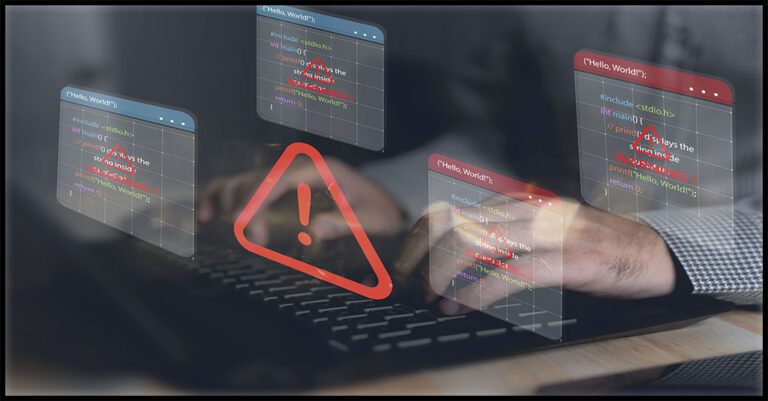Common Ransomware Attack Vectors and How to Avoid Them

Learn how to avoid a ransomware nightmare
Ransomware attacks are rampant in 2023, and companies of all sizes are at risk of facing this threat every single day. Cybercriminals have been capitalizing on ransomware attacks to victimize businesses, demanding huge sums in exchange for decryption keys and the deletion of stolen data.
Within the first two quarters of the year, bad actors extorted a little under half a billion dollars from their victims — a 64% increase since 2022. If ransomware attacks persist at their current frequency and intensity throughout the remainder of the year, cybercriminals could potentially accumulate nearly $900 million by the end of 2023.
The rise in ransomware incidents prompts the question: why is there a significant increase in these attacks? The answer revolves around the increasing number of ransomware attack vectors in an organization.
Businesses today are grappling with significantly larger attack surfaces, primarily due to the rapid digitalization and expansion of their IT infrastructures. Integrating cloud services, IoT devices and remote working setups has widened potential entry points for cyber threats. Each new device, software or endpoint represents a potential vulnerability that cybercriminals can exploit. This broadened attack surface offers abundant entry points for ransomware, ultimately leading to an increased number of attack vectors and heightened susceptibility to ransomware attacks.
Let’s take a look at what ransomware attack vectors are and how they affect businesses on a global scale.

Find out how Datto EDR helps with Health Insurance Portability and Accountability Act (HIPAA) compliance. GET INFO>>
What are ransomware attack vectors?
Ransomware attack vectors refer to the various avenues and methods through which malicious actors gain unauthorized access to an organization’s systems, networks or devices with the intent of deploying ransomware. These vectors act as paths or means by which cybercriminals deliver and execute ransomware attacks on a victim’s digital assets, initiating the encryption process and subsequently demanding a ransom for decryption keys.
Understanding ransomware attack vectors is paramount for both organizations and individuals, enabling them to develop robust cybersecurity strategies. Businesses can proactively create and implement security measures tailored to their IT environment’s specific vulnerabilities and potential entry points.
It consequently becomes important to educate users about what ransomware attack vectors are and the importance of adhering to security practices to better handle such risks.

Learn more about growing supply chain risk for businesses and how to mitigate it in a fresh eBook. DOWNLOAD IT>>
Common vectors for ransomware attacks
By being well-versed in ransomware attack vectors, businesses can stay ahead of cyber threats. But to do so, they — and their employees — should be able to identify attack vectors before taking any preventive measures.
Listed below are some of the most common ransomware attack vectors.
Phishing and weak email security
Phishing is a prevalent ransomware delivery tactic that bad actors use to deceive recipients into clicking malicious links or downloading infected attachments via emails. These emails often impersonate legitimate entities, exploiting human curiosity or trying to create a sense of urgency. Once clicked, the cybercriminals can deploy their ransomware.
The main reason phishing emails get through to employees in the first place is because of weak email security. If businesses don’t invest in strengthening their email security, they are more susceptible to phishing attacks. When a phishing email bypasses weak email security and lands in an unsuspecting employee’s inbox, the employee may accidentally interact with its contents that could contain malicious links or attachments, and create an opening for a ransomware attack.
Weak or compromised credentials
Cybercriminals often use brute force attacks, obtain compromised login credentials from the dark web or previous data breaches, or try to decode weak passwords. A brute force attack is an automated technique that attackers use to systematically guess or try every possible combination of passwords until the correct one is found, making it a time-consuming but effective method for infiltrating systems. Once they gain access to an account or system, they can easily move around the network and execute ransomware, leveraging the compromised employee’s credentials.
Vulnerabilities and software exploits
Bad actors specializing in ransomware attacks meticulously analyze software, operating systems and application vulnerabilities. They then craft malicious code to exploit these vulnerabilities, allowing them to infiltrate systems and initiate attacks.
Take the MOVEit hack, for example. Cl0p, a Ransomware-as-a-Service gang, was able to exploit a previously unknown vulnerability to launch one of the biggest ransomware and supply chain attacks this year. That’s why regular security updates and patches are essential for mitigating this type of ransomware attack vector.
Misconfigurations
Poorly configured security settings or incorrectly set permissions allow cybercriminals to exploit network weaknesses. Ransomware actors can exploit these misconfigurations to gain unauthorized access and move within the network, leading to devastating consequences.

See the path from a cyberattack to a defensive success with managed SOC in this infographic. GET IT>>
Poor or missing encryption
Lack of proper encryption or weak encryption protocols can make data susceptible to ransomware attacks. Cybercriminals take advantage of this vulnerability to encrypt sensitive information and demand a ransom for its release.
Social engineering
Social engineering relies on manipulating human psychology to trick individuals into revealing sensitive information or performing actions that facilitate a ransomware attack. This might involve impersonating trusted figures, creating a sense of urgency or exploiting emotions to deceive targets.
Cybercriminals have grown increasingly creative in using social engineering techniques to reach their objectives. Training the workforce to follow security best practices and teaching them to identify and report social engineering attempts is critical.
Text and instant messages
Similar to phishing emails, ransomware can be distributed through text messages or instant messaging platforms. Cybercriminals send seemingly harmless messages with malicious links or attachments, enticing recipients to interact with them and subsequently initiating a ransomware attack.
Removable media
Ransomware can be introduced to a system through infected USB drives or external hard disks. When users unknowingly insert these media into their devices, the ransomware is activated and quickly spreads throughout the network, encrypting files before IT professionals realize something is wrong.
Ads and pop-ups
The most common way a system gets infected through malicious links is due to malvertisements and website pop-ups. Bad actors can deliver ransomware payloads when employees click on malicious ads or pop-up windows. Unsuspecting users interacting with these elements inadvertently download ransomware onto their devices.
Remote desktop protocol (RDP)
RDP is a common vector for ransomware attacks. Attackers exploit weak RDP credentials or known vulnerabilities to gain remote access to systems, providing an avenue for deploying ransomware within the network. That’s why the FBI and other cybersecurity authorities urge businesses to be extremely cautious when granting and managing remote access to corporate networks.
Understanding and addressing these common ransomware attack vectors is crucial for enhancing an organization’s cybersecurity measures and effectively mitigating the risk of ransomware attacks. While focusing on all these vectors is important, phishing is the leading cause of ransomware attacks and requires particular attention.

Explore how AI technology helps businesses mount a strong defense against phishing GET INFOGRAPHIC>>
What is the main vector of ransomware attacks?
Phishing is the leading ransomware vector in the current threat landscape. Phishing has a high success rate and low upfront costs, and a malicious message can be sent to thousands of unsuspecting, susceptible targets over a short period. What’s more? Bad actors, on average, create new phishing websites every 20 seconds to increase their chances of spoofing their targets and launching ransomware attacks.
The danger of phishing as the top ransomware attack vector cannot be overstated. Phishing attacks today are highly sophisticated, constantly evolving and difficult to detect, making them highly effective in infiltrating an organization’s IT environment.
Here are the main reasons why protecting against phishing is crucial:
- Preventing initial compromise: Phishing is often the entry point for ransomware. Effective protection against phishing significantly reduces the likelihood of a successful ransomware attack. It acts as the first line of defense, thwarting an attacker’s attempts at gaining a foothold within the organization.
- Preserving data and operations: Ransomware encrypts valuable data, disrupting business operations and causing severe financial repercussions. Guarding against phishing minimizes this risk by blocking ransomware’s primary route to access the system, ensuring data remains intact and operations go uninterrupted.
- Safeguarding sensitive information: Phishing attempts often seek sensitive credentials or personal data. Successfully preventing phishing protects against ransomware and shields confidential information from falling into malicious hands, averting potential data breaches.
- Maintaining business continuity: Swiftly identifying and mitigating phishing attacks ensures business continuity. With phishing being the gateway to ransomware, robust defense measures enable organizations to minimize downtime and continue business operations even in the face of potential cyberthreats.
- Preserving reputational integrity: Falling victim to a ransomware attack via phishing can severely tarnish an organization’s reputation in the market. Proactive protection demonstrates a commitment to cybersecurity, and fosters trust among stakeholders, customers and partners.

See what the biggest cybersecurity challenges are right now in our Mid-Year Cyber Risk Report 2023. DOWNLOAD IT>>
How to protect against ransomware threat vectors
Implementing robust cybersecurity measures is crucial for organizations to mitigate the risks posed by ransomware attack vectors. By adopting best practices and preventive measures, businesses can significantly reduce their attack surface and fortify their defenses against potential ransomware threats.
Here are some of the best ways to mitigate ransomware threat vectors:
Anti-phishing protection and email security
Anti-phishing measures, such as email filters and specialized email security software, play a critical role in identifying and blocking phishing attempts. These tools help prevent phishing emails from reaching an employee’s inbox.
By detecting and blocking phishing emails, organizations reduce the likelihood of their workforce interacting with harmful content and inadvertently triggering a ransomware attack.
Password security and management
Enforcing strong password policies, multifactor authentication (MFA) and regular password updates can thwart attacks that exploit weak or compromised credentials. By utilizing strong, unique passwords and implementing MFA, organizations significantly elevate their security posture. This measure reduces the risk of unauthorized access through compromised passwords, a common attack vector for ransomware.
Software updates and patching
Regularly updating and patching all software, including operating systems and applications, is imperative to fix known vulnerabilities. Cybercriminals often exploit these vulnerabilities to deliver and execute ransomware. Keeping systems up-to-date closes security gaps, making it harder for attackers to find and exploit weaknesses within an organization’s IT infrastructure.
Security awareness training
Security-related risks are reduced by up to 70% when businesses invest in cybersecurity awareness training, which makes educating employees about cybersecurity best practices and the latest threats essential in building a human firewall against ransomware.
Training should include identifying phishing attempts, exercising caution with email attachments and links and reporting suspicious messages promptly. Well-informed employees are less likely to fall victim to social engineering tactics, reducing the risk of successful ransomware attacks.

Find out about five of today’s biggest dark web threats to businesses in this infographic. DOWNLOAD IT>>
Vulnerability management
Regularly identifying and assessing vulnerabilities within an organization’s network, systems and applications is critical. This proactive approach allows for timely remediation, minimizing the potential attack surface available to cybercriminals. By promptly addressing vulnerabilities, organizations significantly reduce the risk of exploitation by ransomware and other malicious actors.
Ransomware monitoring and detection
Implementing advanced monitoring and detection systems specifically designed to identify ransomware activities is key to a proactive defense strategy. These systems can detect unusual file encryption patterns, unauthorized access attempts or suspicious behavior associated with ransomware. Early detection enables swift response and containment, limiting the impact and spread of the ransomware across a company’s IT network.
Dark web monitoring for compromised credentials
Monitoring the dark web for compromised credentials is crucial in improving an organization’s defense against ransomware attacks. Dark web forums act as marketplaces for cybercriminals to obtain an individual’s stolen login details. That’s why detecting compromised data early is key to strengthening digital security.
Specialized tools scan the dark web to identify compromised credentials, allowing for prompt password changes to mitigate potential harm. This proactive approach also offers insights into network vulnerabilities, enabling IT professionals to improve cybersecurity measures. Integrating dark web monitoring into a comprehensive security strategy acts as an early warning system, helping organizations respond swiftly to threats and reducing the risk of ransomware attacks.
By incorporating these best practices, organizations can comprehensively and proactively tackle ransomware attack vectors. The combined effect of these measures significantly reduces the attack surface available to cybercriminals, making it more challenging for them to infiltrate systems and execute successful ransomware attacks. A multifaceted approach to cybersecurity is crucial in safeguarding valuable data and ensuring business continuity in the face of evolving ransomware threats.

Get the scoop on 5 of the worst email-based attacks plus tips to protect businesses from them. GET INFOGRAPHIC>>
Limit ransomware threat vectors with security awareness and phishing protection
While improving internal security protocols and policies helps strengthen an organization’s cyberdefenses against ransomware attack vectors, Graphus, BullPhish ID and RocketCyber offer you a whole new level of confidence in terms of fortifying your IT.
Graphus, an automated email security platform, is a cutting-edge solution that puts three layers of AI-powered protection between employees and phishing messages. It works equally well as a standalone email security solution or supercharges your existing Microsoft 365 and Google Workspace email security.
BullPhish ID is an effective, automated security awareness training and phishing simulation solution that provides critical training that improves cyber hygiene, prevents employee mistakes and reduces a company’s risk of being hit by a cyberattack.
RocketCyber, a well-rounded managed SOC platform, empowers MSPs to deliver world-class cybersecurity services to their clients at incredible prices. The platform also features Ransomware Detection, a powerful application that monitors an organization’s Windows desktops and servers for file ransomware encryption activity. If any malicious process is detected, it is immediately terminated and the infected device is automatically isolated from the network.
Learn more about our security products, or better yet, take the next step and book a demo today!

Our Partners typically realize ROI in 30 days or less. Contact us today to learn why 3,850 MSPs in 30+ countries choose to Partner with ID Agent!
Check out an on-demand video demo of BullPhish ID or Dark Web ID WATCH NOW>>
See Graphus in action in an on-demand video demo WATCH NOW>>
Book your demo of Dark Web ID, BullPhish ID, RocketCyber or Graphus now!